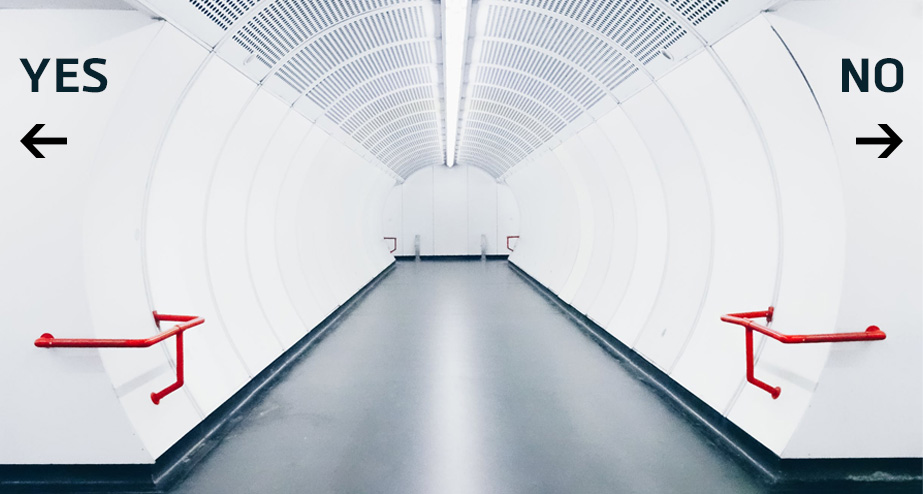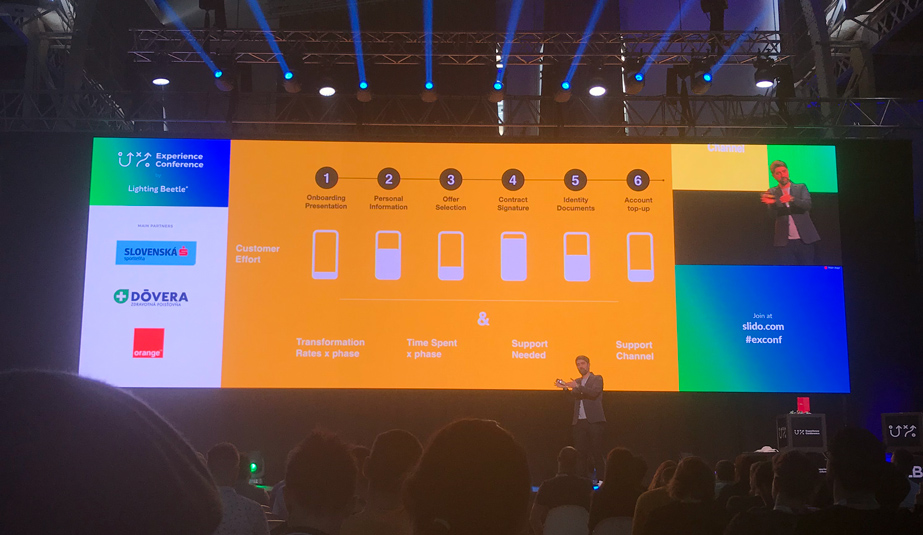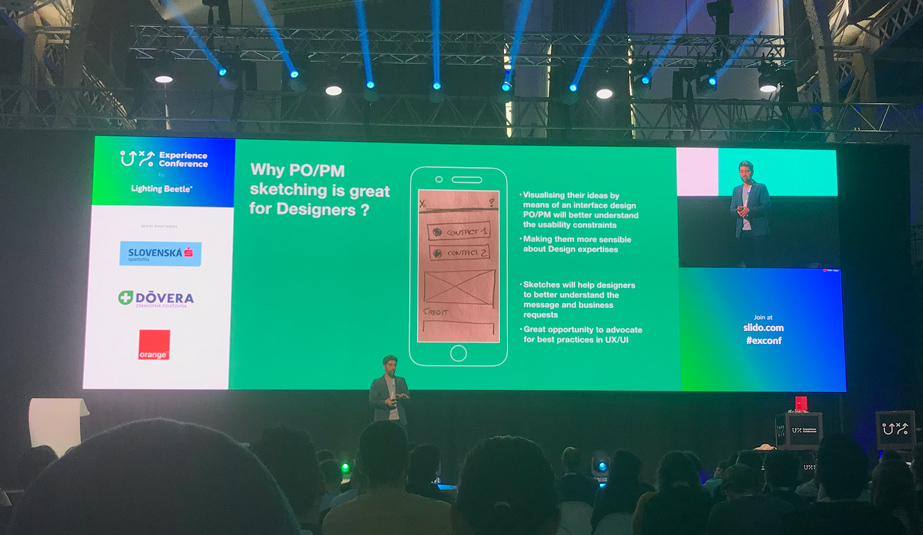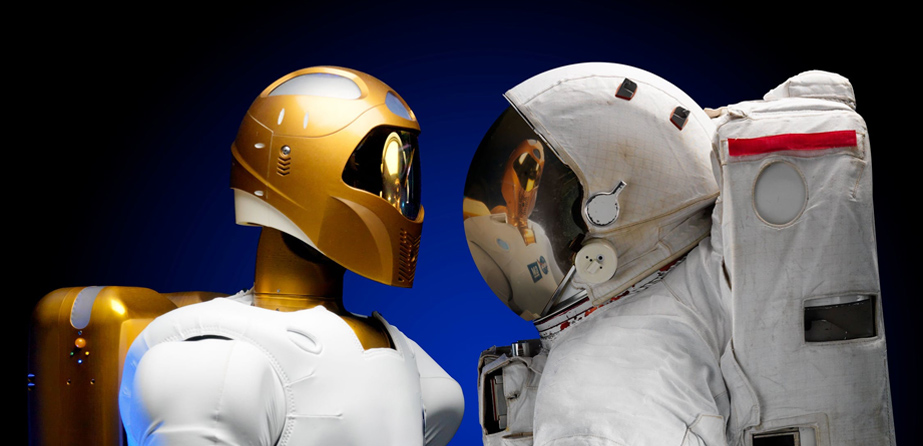Tuesday, March 27th, let the journey of my first UX conference begin. I have no experience in event-organizing, therefore I shall focus on the speakers and what I learned during Experience Conference Bratislava 2018.
The event was hosted by Vitaly Friedman (co-founder of Smashing Magazine), who opened the conference on a light note, sharing some fun-factors from his field of work. He emphasized the importance of emotional connection; it is crucial, in order to stand out, to make people think. To get a better idea of what is meant by focusing on human emotion, click on the following link and keep answering “NO” all the way…I double dare you ;).
The next speaker in line was Jenny Gove from Google (UX research lead), who took us back to 1997, when WIRED magazine first declared the death of web…no need to get into that argument, even Gary Wolf (the writer) admitted, that it was the worst story ever published by the magazine and that the prediction couldn’t be more wrong. The same claim had been made several times since then. The latest is that the web is dying, and apps are killing it. Jenny pointed out that the reality is different. Predictions are made all the time, backed by big names, experts, etc. However, if you want to find out what is best for your business, you must research your user-behavior. If you are interested diving deeper into the subject, check out.
Nathan Waterhouse‘s presentation was about the power of questions. Just like Jenny, Nathan also highlighted the importance of user research. It is crucial to know your users and framing your questions with extra care. You can create value for them, if you are able to empathize with them. This helps to focus on the benefits of the product or service.

There is a simple practice that anyone can apply. Start by thinking about something, that has been bothering you for a while, something that is just simply dis-functional, or doesn’t exist. Then you pose the question: How might we…? The “HOW” opens up possibilities, the “MIGHT” will free you from judgment, and the “WE” is the assurance that you are not alone in finding the solution. Often you may face obstacles in achieving a goal, where you need to ask yourself: What’s stopping us from doing it? / Why would we want to do that? Questions are important to focus on the task and finding out details about your users and to come up with real solutions for real problems. Don’t be persuasive though, let the users do the talking!
Next on stage was David Ruz (Head of Design and CX), who at first sight looked like the European version of Mr. Stark from the Avengers ;), well at least that’s what I thought for a moment. But before my train of thought would derail, David played a “disruptive” video…and I was back on track…sort of… I never thought, that one day I will learn, that a telecom giant would launch its online banking…until now. Orange in France introduced his online banking back on November 2, 2017, and their ambition is to offer everything that a bank does.

David’s team was/is responsible for the UX and design of the project. One thing that stood out amongst others was when he said: “The facilitator role of design is over”…quickly followed by: “Deliver meaningful experiences to users and competitive advantages to business”…in other words function first, design second. I personally think function and design go hand-in-hand, but I am sure he simply meant, what all previous speakers had laid stress on: do your research and test your idea, before making it visually attractive. Not only was the subject of his presentation extremely resourceful, but he also put the audience in the driver’s seat. His presentation was assembled like those fighting fantasy game-books, that I used to read as a teenager, where at the end of each chapter I would have to choose, how the story continued. I personally found it super-cool. 🙂
Hannah Pileggi from Airbnb and Stephanie Troeth (independent UX strategist) both corroborated the process of user-research brought before design. Organizational strategy is after all driven by results from extensive researches and analytics. It is not enough to assume what users might think, how they may react, real examples must be evaluated, and solutions presented upon these assessments. You must adopt a user-centric mindset, where any design decision made in a project is the choice of technical solution.
The customer journey must be well defined, implemented and also maintained. Everybody must be involved in the making, from the product owner, through the jurist. Do not worry, when PO/PM start sketching ideas, they are not on the mission to steal the job of a designer. Sketches help both designers and PO/PM to understand the usability constraints.

The final speaker was Andrew Doherty (Product designer, Another.ai) shaking up the snoozy audience. Andrew is working on an AI-powered robot, thus the subject of his talk was on designing the future. His presentation was fundamentally different from anything I heard throughout the day. It was like suddenly realizing that every knowledge gathered from the other speakers, or even generally from my profession, will not prepare me for what is coming…what is already happening.
Fact is, that by mentioning AI, most of us imagine a human-like robot like seen in movies. However, we are already using artificial intelligence on our mobile devices, in transport, in our homes, the military and in the health-care industry, too. Andrew believes that our technological creations will make us designers and many other professions redundant. While I hope that it is little further down the road, it certainly got me thinking, and rethinking the future.

In conclusion, AI can eliminate many human errors, make quicker analysis, calculate and execute with unmatched precision and therefore it will thrive and reshape many industries, but instead of being afraid of it, we should embrace the transformation and expand our mind to the possibilities offered by the integration of AI into our daily lives.
It was a long day, but I felt no mental fatigue :). I walked out the door with my thoughts racing. I am not exactly a conference-goer, but I am glad I attended this one.
Do you see yourself working with us? Check out our vacancies. Is your ideal vacancy not in the list? Please send an open application. We are interested in new talents, both young and experienced.
Join us